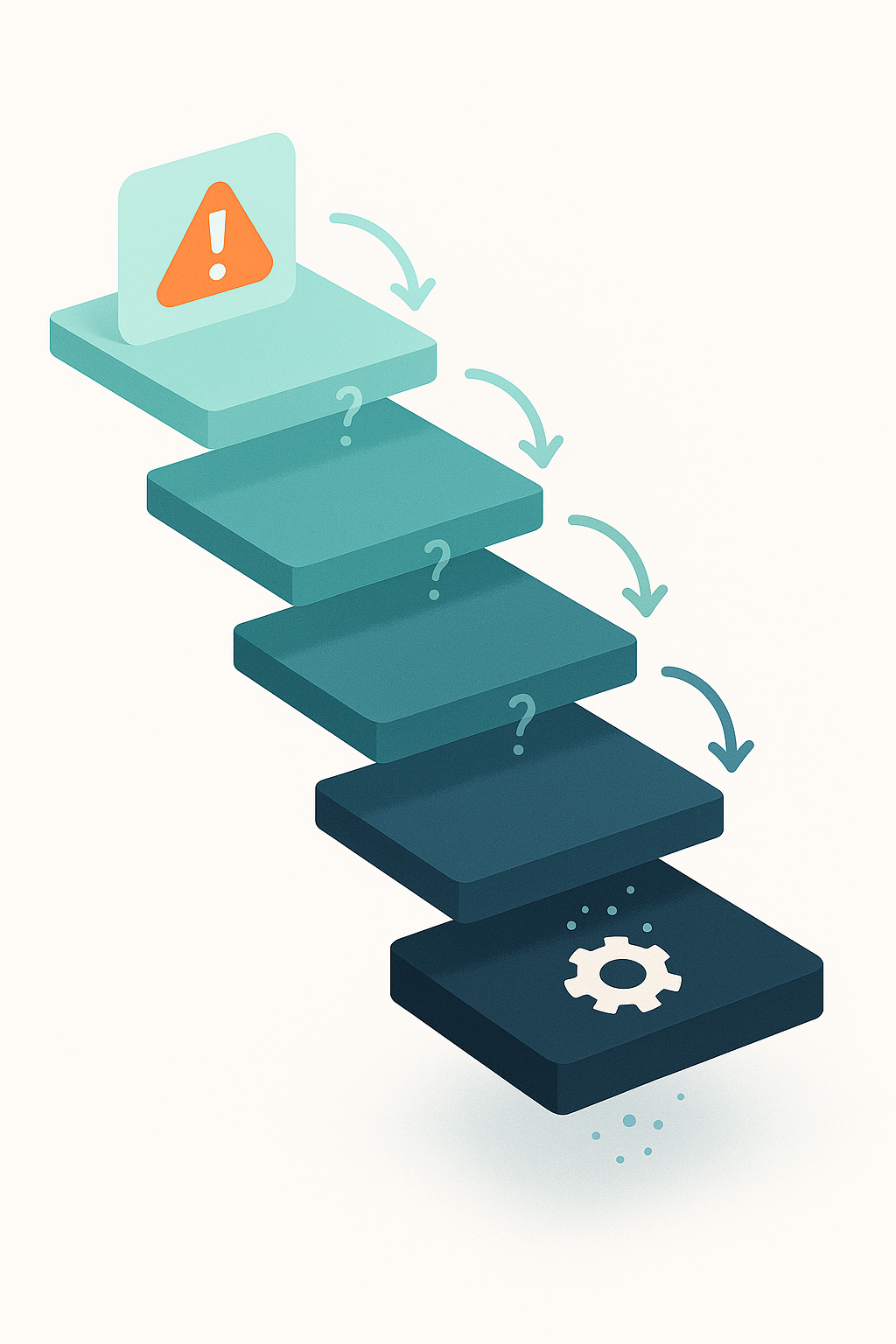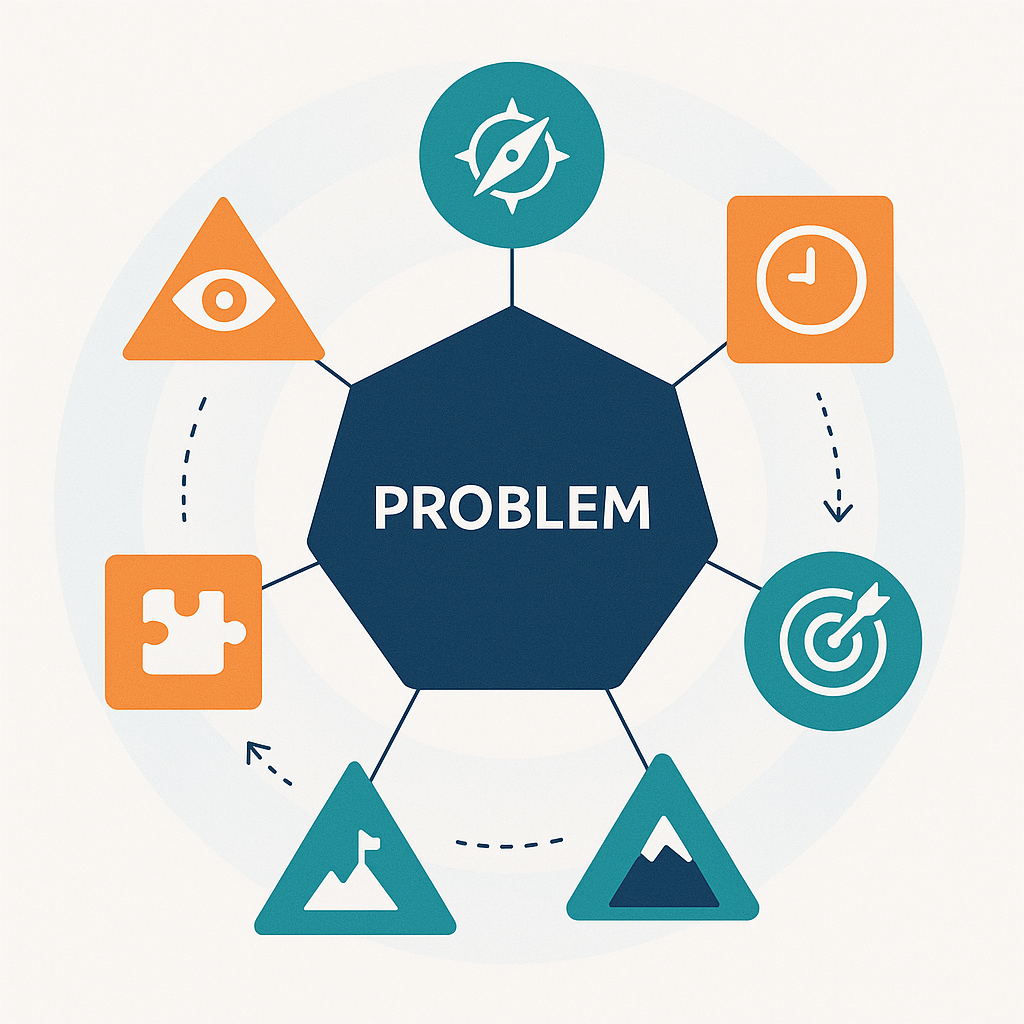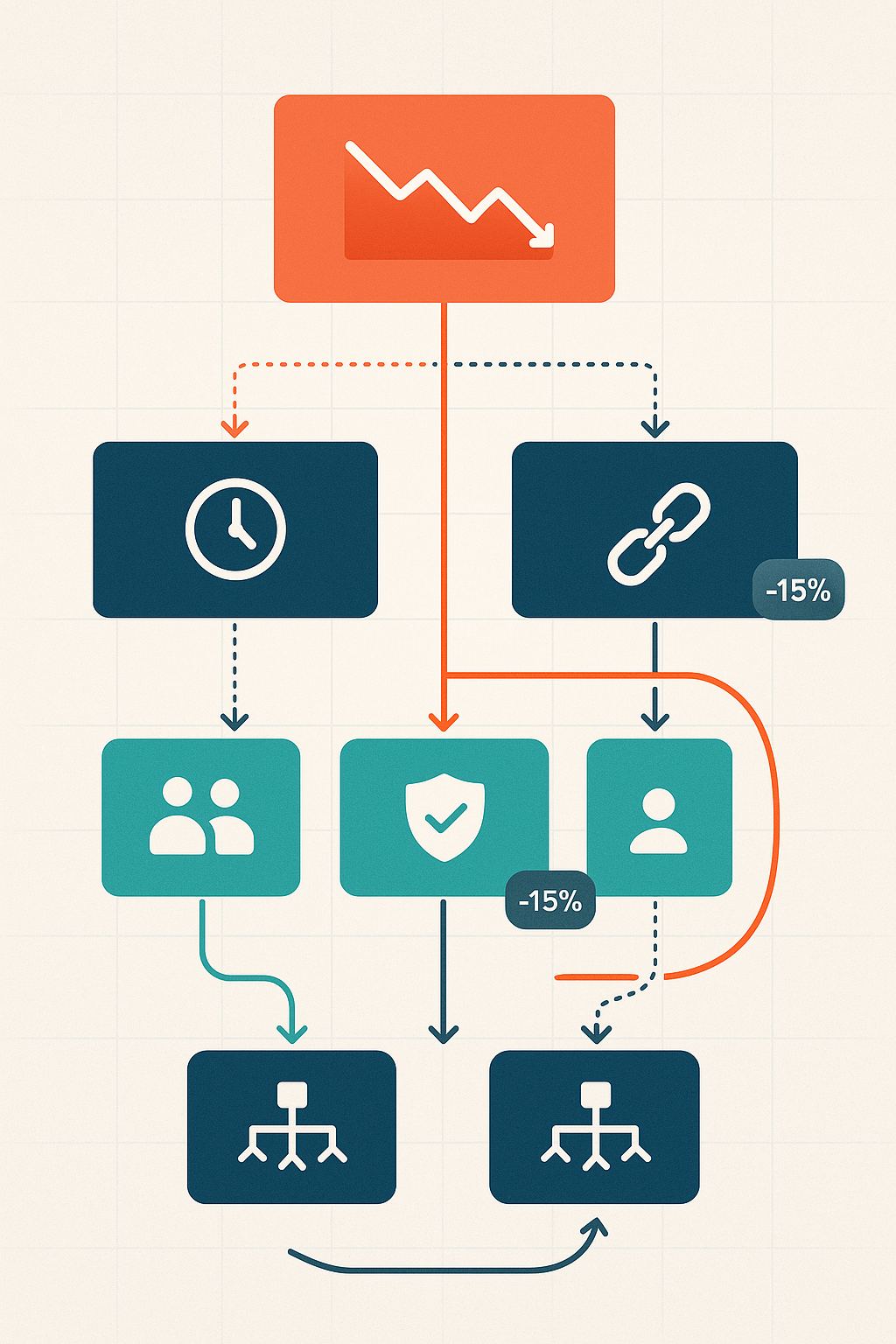Building on your newfound ability to generate divergent ideas and reframe problems creatively, you're now ready to master the art of digging deeper. While ideation helps you imagine possibilities, systematic root cause discovery ensures you're solving the right problem at its source, not just treating symptoms. As a Product Manager, you'll often face situations where surface-level issues mask deeper organizational, technical, or process challenges that, if left unaddressed, will cause problems to resurface repeatedly.
The techniques you'll learn in this lesson transform you from a reactive firefighter into a strategic problem solver. By developing the discipline to resist jumping to quick fixes when stakeholders are clamoring for immediate action, you'll instead guide your team through structured investigation methods that reveal why problems truly occur. This enables solutions that address fundamental causes rather than temporary patches. Moreover, this systematic approach not only prevents recurring issues but also builds organizational learning that strengthens your product's foundation over time.
The 5 Whys technique serves as your investigative scalpel, cutting through layers of symptoms to expose root causes. Despite its simplicity, this method requires skillful facilitation to overcome defensive behaviors and surface uncomfortable truths. When your metrics suddenly crater or customers start churning unexpectedly, the 5 Whys provides a structured path from "what happened" to "why it really happened", often revealing surprising systemic gaps that no one anticipated.
The power of 5 Whys lies in its relentless pursuit of causality. You begin with the observable problem and ask why it occurred, then take that answer and ask why again, continuing until you reach a root cause that, if addressed, would prevent the entire chain of problems. Consider a scenario where user activation suddenly drops 20%. Your first why might reveal "users are abandoning during onboarding." The second why uncovers "the new permissions flow is too complex." The third why exposes "we added five new permission requests last sprint." The fourth why reveals "each team added their own permissions without coordination." The fifth why finally surfaces the root cause: "we lack a unified permissions governance process." Notice how you've moved from a metric problem to a process gap that affects far more than just activation.

Let's observe how this technique works in practice through a conversation between a Product Manager and an Engineering Lead investigating a critical production issue:
- Victoria: Jake, we had another payment timeout issue yesterday affecting 200 customers. Why did the payment processing fail?
- Jake: The database queries were timing out. We just need to optimize them.
The Phoenix Checklist, originally developed by the CIA for intelligence analysis, serves as your tool for breaking cognitive fixation and discovering overlooked problem dimensions. When your team gets stuck solving the same problem repeatedly or when initial investigations feel incomplete, the Phoenix Checklist's probing questions force fresh perspectives that the 5 Whys might miss. This technique excels at revealing hidden assumptions, challenging problem definitions, and uncovering adjacent issues that contribute to the situation.
The checklist operates through two categories of questions: problem questions and plan questions. Problem questions challenge your understanding of the issue itself. You might ask "What isn't the problem?" to establish boundaries, or "What are we assuming that might not be true?" to surface hidden beliefs. For instance, if you're investigating why feature adoption is low, asking "What features have high adoption and why?" might reveal that the issue isn't user interest but rather feature discoverability. Plan questions then examine your solution approach with prompts like "What are the minimum success criteria?" or "What would make this problem irrelevant?" These questions often expose that you're solving for edge cases while missing the mainstream user need.

The real magic happens when you combine Phoenix Checklist prompts with your team's domain expertise. During a session investigating why deployment failures increased, you might ask "When doesn't this problem occur?" Team members might realize failures only happen during peak traffic periods, immediately shifting focus from code quality to infrastructure scaling. Another powerful prompt is "Who else has solved this problem?" which can lead to discovering that another team already built internal tools that address your exact challenge. By forcing you to examine the problem from multiple vantage points before committing to a solution path, the checklist prevents tunnel vision.
Creating clear causal chain documentation transforms abstract root cause analysis into actionable intelligence that drives organizational change. Your ability to visually connect surface symptoms to deep systemic issues determines whether your investigations lead to real improvements or just generate interesting discussions. Effective causal chains serve as both diagnostic tools and persuasion artifacts, helping stakeholders understand why addressing root causes matters more than quick symptom fixes.
The most powerful causal chain diagrams follow a visual hierarchy that makes complex relationships instantly comprehensible. Start with the visible business impact at the top, perhaps "30% increase in customer churn," then work downward through contributing factors. Each level should answer "what caused this?" for the level above. Your second tier might show "support response time increased to 48 hours" and "product stability decreased 15%." The third tier reveals "support team lost 3 senior members" and "testing coverage dropped to 60%." The bottom tier exposes root causes: "no career growth path for support roles" and "testing was deprioritized for feature velocity." This structure helps executives quickly grasp how seemingly unrelated decisions cascade into business problems.

When documenting causal chains, it's essential to distinguish between correlation and causation using different visual indicators. Solid arrows indicate proven causal relationships where you have data showing that A directly causes B. Dotted arrows suggest correlation or contribution where the relationship exists but isn't deterministic. This distinction prevents overconfident assertions while still capturing important connections. Additionally, include quantitative data wherever possible—instead of "many bugs," write These specifics add credibility and help stakeholders assess impact magnitude.
